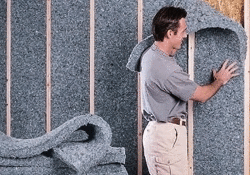PLANNING AND BUDGETTING AND BALANCING THE BUDGET

The first step is the planning stage. I hope that the imaginative makeovers in the second half of the SITE will help you focus on a specific look that's right for you. Once you know what you want to accomplish, then put the different tasks in order and allow enough time to accomplish each step. Make alternate arrangements for sleeping so that you can close the door on the space while you are working. Set aside one weekend for the preparation steps and then paint the next weekend when you are fresh and full of energy. Refinished floors require five to ten days to cure properly, depending on the heat and humidity, before you move furniture back in. It may sound simplistic, but a well-planned makeover might mean the difference between finishing happy or literally sleeping in the dog- house! Here's the plan that works for me. Balance the budget In any bedroom, if you are starting from scratch, the biggest part of your budget is going to be allocated to the bedding. Since the bed is the focal point of your room, buy the duvet cover, bedspread, pillow shams, and whatever else is seen on the bed first, and design the rest of the room around that. A good mattress, duvet, and bed linens can add up to a sizable amount, but it's money well spent, and you can save handily in other areas. Be an educated shopper. Read the section on sheets, duvets, and bed- spreads on pages 18 to 19. Quality sheets look better, feel better, and last longer, so they are a good buy. And there are semiannual sales in most department and specialty stores. Discontinued lines will be sold at a dis- count, as will "bed in a bag" packages, which combine matching sheets, pillowcases, and comforter. Remember to check the thread count. Furnishings such as bedside tables, a headboard, a dresser, or an armoire can be salvaged from family and flea market, or bought economically and refurbished. This is where your imagination and a bit of paint pay big dividends. Window coverings may be understated, but are necessary for privacy and to block out the light. There are simple solutions such as blinds and tab-top curtains made from sheers or sheeting that will complement your room at reasonable prices. Paint is the most economical decorating tool there is, and as you will discover throughout this book, its versatility offers remarkable results for any style. So don't be disheartened if you have little money left over after you have shopped for linens. Paint is where you will save -it just won't look like it. Always buy the best-quality paint. The colors will be truer, it goes on more smoothly, and fewer coats are required to get good coverage.